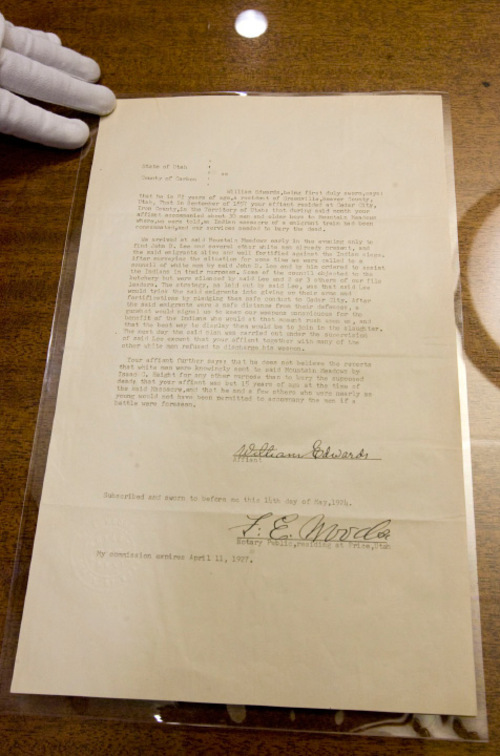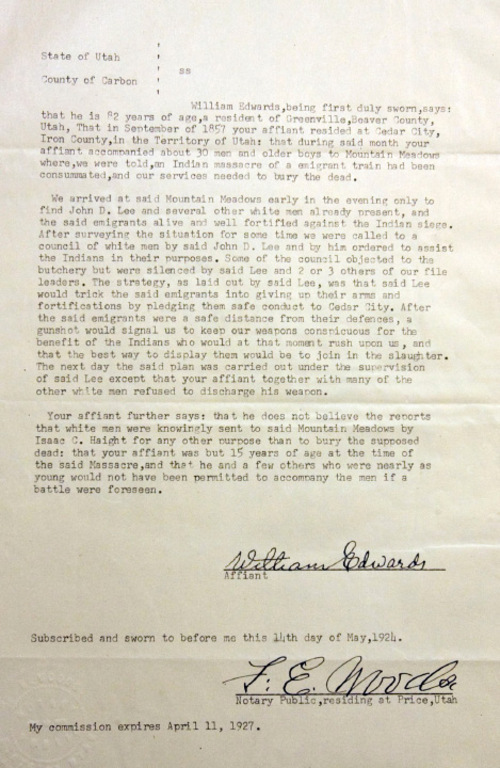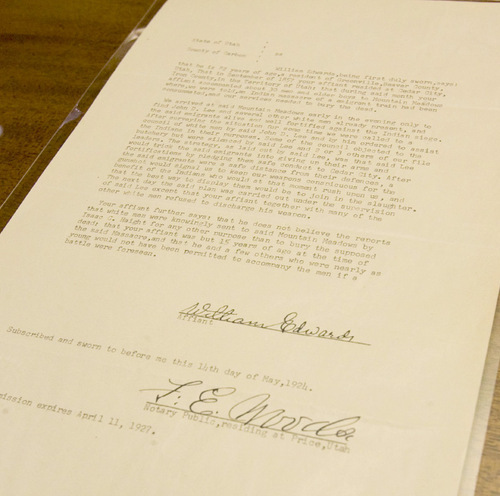This is an archived article that was published on sltrib.com in 2010, and information in the article may be outdated. It is provided only for personal research purposes and may not be reprinted.
Many of Mark Hofmann's forgeries, with signatures attributed to such figures as John Adams, Emily Dickinson and Mark Twain, among others, undoubtedly have yet to be detected.
But how many remain in circulation — dozens, scores, hundreds? And what impact will they have on history?
In August, a Hofmann forgery called the "1924 William Edwards affidavit" turned up as source material cited by David L. Bigler and Will Bagley in their book, Innocent Blood: Essential Narratives of the Mountain Meadows Massacre.
It might have slipped by but for Gary Topping, a former curator at the Utah State Historical Society, who told Seattle-based historian Polly Aird that the document had come into state archives from Hofmann two years before the October 1985 bombings. In her review of the Bigler/Bagley book, Aird made note of the forgery.
In 1988, guards at the Utah State Prison found a list in Hofmann's cell of autographs he had forged. It included 56 names of historical Mormon figures and 23 others that were not Mormon but were famous Americans, including George Washington, Abraham Lincoln and Betsy Ross.
In his book, Victims, The LDS Church and the Mark Hofmann Case, Richard E. Turley Jr. lists 445 documents and coins that passed through Hofmann's hands.
Not all of them are necessarily forgeries, Turley said. But it's possible that many more Hofmann forgeries are in circulation among collectors, historians and museums.
"I think, potentially, there may be situations where his forgeries are seen as authentic and could change the course of history," he said.
During the period from April 1980, when Hofmann forged the Anthon Transcript, to October 1985, when he killed Steven Christensen and Kathleen Sheets, Hofmann could have created hundreds of forgeries, said Allen Roberts.
Roberts, who along with the late Linda Sillitoe wrote Salamander: The Story of the Mormon Forgery Murders, said Hofmann's forgeries undoubtedly have wormed their way into history.
One book, Mormon Enigma: Emma Hale Smith by Linda King Newell and Valeen Tippetts Avery, used a Hofmann document as source material, Roberts said.
"I don't know if it's hundreds, or scores," he said of Hofmann's prolific output. "But that's what he did full time."
Rare books dealer Ken Sanders thinks the number of Hofmann forgeries in circulation is much higher.
"My belief is that he forged more than 1,000 documents," Sanders said.
Pointing to Hofmann's forgeries of Betsy Ross and Emily Dickinson, Sanders said the forger's handiwork will litter history with falsehoods and sting collectors and historians.
"His forgeries live on and his forgeries keep claiming new victims."
Lecture on Mark Hofmann
Criminologist Steve Mayfield will present "Mark Hofmann Revisited" on Oct. 18 from 7-9 p.m. in the Lindquist Alumni Center Garden Room at Weber State University in Ogden. The free lecture is presented by the Weber State University Alumni Association and the Weber Historical Society.







